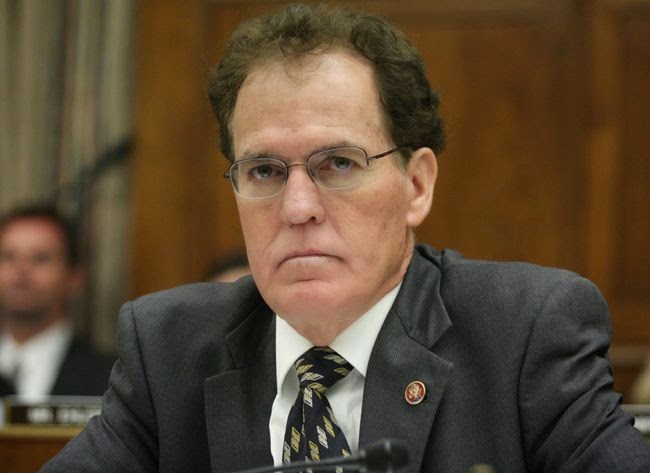Is the Congressman Misinformed or Misguided? Or Both?
Aw, gee … now there’s another one. Congressman Phil Gingrey, a Republican from Georgia, has introduced a bill that would prohibit any federal dollars from being used to subsidize Amtrak’s food and beverage service.
Good heavens … where to begin?
Does Amtrak lose money on its food service? Of course it does. Serving an estimated 10,000 meals a day in rolling restaurants all over the country is just a wee bit more complicated and costly than serving up burgers and fries in your favorite local family restaurant.
The average passenger on one of Amtrak’s long-distance trains is aboard for about 18 hours and that translates to four meals. Obviously, passengers need to be fed and Amtrak can’t simply NOT feed them. Nor is it reasonable for passengers to be charged enough for Amtrak to cover the actual cost of feeding them. People will make allowances, but they expect some kind of appropriate value for their money … or they just won’t pay.
I’ve traveled a great many miles on Amtrak’s long-distance trains and can tell you that a majority of the patrons in the dining cars are sleeping car passengers. Their meals are included in their fares, but I can assure you, even with that being figured into the equation, you’re still paying top dollar when you book space in an Amtrak sleeping car.
For example, if you were to travel from Denver to Sacramento on the California Zephyr in the middle of next month, a coach seat would cost you $130. If you step up to a roomette, the cost of your ticket jumps to $616. That includes your room, plus two breakfasts, two lunches and one dinner.
But how likely would you be to make that trip if the hamburger at lunch cost $18.95 instead of $10.50? Or if the price of the roomette were raised to $790? Or, carrying this to an opposite, but equally impractical extreme, if there were no food service at all?
Here’s the unvarnished truth, put in the simplest possible terms by a bonafide authority on passenger rail: “If the dining cars go, the sleepers go. If the sleepers go, the big revenue goes. If the big revenue goes, Amtrak goes.”
So what are these bozos thinking … the Phil Gingreys and the Pete Sessions and the rest of these Republicans in Congress? Some of them know damn well that what they propose would mean the slow, but inevitable death of Amtrak. Some of them might actually believe that Amtrak can be badgered and threatened and bullied into profitability. Others are the ideologues who oppose any subsidy on philosophical grounds no matter the consequences.
The very kindest thing we can say about most of those people is that they haven’t bothered to learn enough about passenger rail to understand what it does or what it could do or why it’s important.
Then there are those who understand the implications of what they do, but do it anyway … because it means votes from their ignorant and misinformed constituents.
Lazy or sleazy. That’s not much of a choice, is it?





I’m afraid I’m already discouraged from making an overnight trip by the food in the dining car. Sorry to say, it’s a step above vending machine ‘food’ at best.
“If the dining cars go, the sleepers go. If the sleepers go, the big revenue goes. If the big revenue goes, Amtrak goes.”
Or long-distance Amtrak goes. Regional Amtrak – depending much less on federal money – would likely survive. The Regional and the Long Distance routes are really two different animals, and animals whose domain [I don’t believe] has much overlap.
I am supportive of passenger rail, do not mind subsidizing it – hey, I have to subsidize everything else including bombs – but the long distance routes as they exist to day are broken. They are barely an effective mode of transportation per dollar – no daily service can be. Without securing some right-of-way over which they have some authority it is hard to imagine a long term future for them. Daily and four to six hours late and the looming possibility of being put on a bus is not a service worth having.
We need out-of-the-box thinking. Sadly that would also likely require Congress to do something – like changing rail regulations, requirements, etc… But corporations are more effective at moving congress than anyone else, and I believe they hold the answer to this problem. Congress makes me sad – but honestly so does NARP and other advocates who see Saving Amtrak as equal to saving passenger rail. I want to save Amtrak but if it ended up as a fill-in-the-gaps service for a country of All Aboard Florida type networks I would be perfectly happy with that – at least corporations can respond to demand, etc… which Amtrak simply cannot do. I live in a booming city with a once-a-day train, a once-a-day train that is very frequently sold out – yet no more frequency, not even more cars in the consist. I would pay to take my bicycle with me, I would pay to check baggage, I would pay to take my dogs. I would pay pay pay, and so would many other people who are doomed to flying from an inconveniently located airport to an inconveniently located airport for a trip that takes the same time as the train. But those *@&@&**@ Amtrak people – I understand through no choice of their own – won’t take my money. I am understanding of that because I am an advocate. Most people are not, they are just customers, so they are frustrated. That is not hard to understand.
I applaud Amtrak employees and management for what they do and what they have accomplished given the givens. But Amtrak cannot be the answer, the United States does not have the political culture to effectively run a federal service. We were once good at building things (perhaps even that is now in doubt), but we have never been very good at running things.
Lets make low interest loans with a long deferment available to transit investors. Lets give property tax exemption to transit right-of-ways. Lets reclaim blighted properties assemble them into bundles and auction them off to investors with a requirement for transit connectivity. Lets clear legal hurdles to reclaiming and defining right-of-way. Lets make it so an investor can build something in 5 years rather than 20 years. Lets destroy, shred, burn, and dissolve in acid the EIS process [and possibly exile to a third world nation whoever the authors are; okay, that is too far]. Lets have lots of projects – many of which will fail, just like historically, the successful projects can buy them up in bankruptcy court. Please, lets advocate for a system that has worked in the past, not one which is just congressional badgering and lurching from one crisis to the next. Can NARP please advocate for something new.